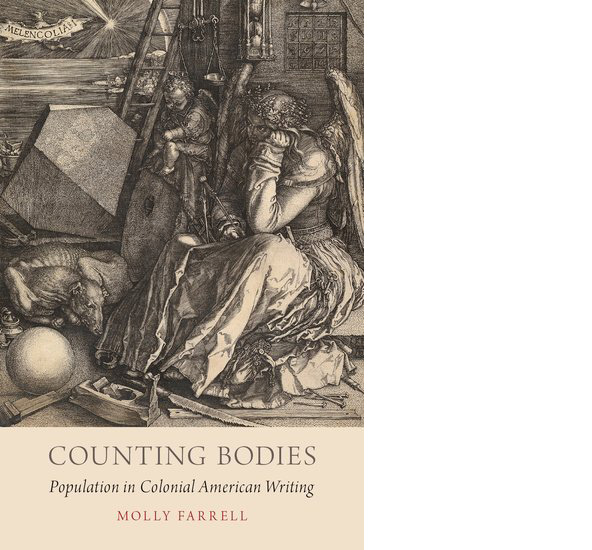Counting Bodies: Population in Colonial American Writing
Book review

Counting Bodies: Population in Colonial American Writing, Molly Farrell, Oxford University Press, 2016, 280pp., £41.99, hard, ISBN 978-0-19-027731-4.
Quantifiable citizenship—in the form of birth certificates, census forms, and immigration quotas—is so pervasive that today it appears ahistorical. Yet before the modern colonial era, there was no word for ‘population’ in the sense of numbers of people and no agreement that monarchs should count their subjects. There was no national census of Great Britain until 1801 and it was a further fifty years before detailed questioning and analysis occurred. In 1800 nobody knew the size of Britain’s population and you could live and die unrecorded in anonymity. While Thomas Malthus foresaw growth in population leading to a semi-starved underclass, then famine and plague—what Thomas Carlyle called the ‘dismal science’—his fellow clergyman Richard Price, the Nonconformist pamphleteer, believed the human race was in terminal decline. Amid the controversy, John Rickman, a radical young polymath, decided a nation could progress only if it knew the facts and promoted the idea of a national census.
Much of the work in the seventeenth and eighteenth centuries in gaining acceptance for the view that people can be represented as populations took place outside government institutions and philosophical treatises in the burgeoning development of the civil society. People initially in Britain and later in the colonies wanted to know about the people in their communities. The idea of Bills of Mortality, a feature of mid-seventeenth century enumeration was exported to the colonies and was increasingly linked to lists of deaths, marriages and births in colonial newspapers. It also occurred in the work of colonial writers such as Mary Rowlandson, who found, in the act of counting the ‘vast numbers’ of Indians who held her captive, a way to imagine fixed boundaries between intermingling groups.
This book explores the imaginative, personal and narrative writings that provided the cultural basis for regulating the listing of bodies. By repositioning a literary prehistory of population science, the book shows that representing individuals as numbers was a central element in colonial projects. Early colonial writings that described routine and even intimate interactions offer a window into the way people wove the quantifiable forms of subjectivity made available by population counts into everyday life. Whether trying to make sense of plantation slavery, frontier warfare, rapid migration or global commerce, writers framed questions about human relationships across different cultures and generations in terms of population.

